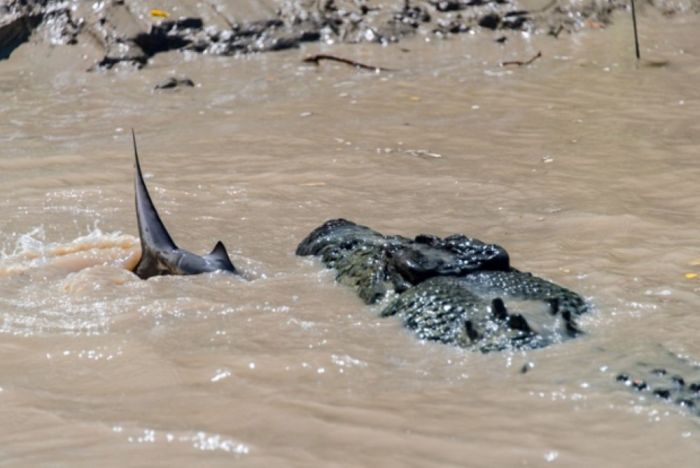|
|
Crocodile Against A Shark
|
An active-swimming predator of pelagic bony fishes, squid and shrimp, the crocodile shark has a sizable oily liver that allows it to maintain its position in the water column with minimal effort. The size and structure of its eyes suggests that it is adapted for hunting at night. The crocodile shark is aplacental viviparous, with females typically giving birth to litters of four. The fetuses are oophagous, meaning that they feed on undeveloped eggs ovulated for this purpose by their mother. Due to its small size, the crocodile shark poses little danger to humans and is of little commercial importance. However, substantial numbers are caught as bycatch, leading it to be assessed as Near Threatened by the International Union for Conservation of Nature (IUCN). This species was responsible for damaging deep sea fiberoptic cables when the technology was first deployed in 1985.
Taxonomy and phylogeny
The English common name "crocodile shark" is derived from its Japanese name mizuwani (水鰐, literally "water crocodile"), which refers to its sharp teeth and habit of snapping vigorously when taken out of the water. Other common names for this species include Japanese ragged-tooth shark, Kamohara's sand-shark, and water crocodile. The crocodile shark was first described as Carcharias kamoharai in a 1936 issue of Zoological Magazine (Tokyo) by ichthyologist Kiyomatsu Matsubara, based on a 73.5 cm (28.9 in) long specimen found at the Koti Fish Market in Japan. The type specimen is a 1 m (3.3 ft) long adult male found at a fish market in Su-ao, Taiwan.
|
|









